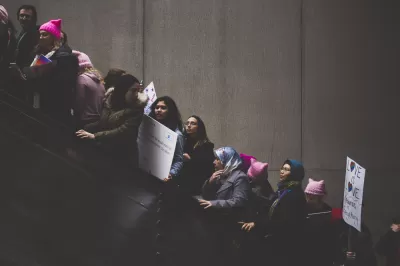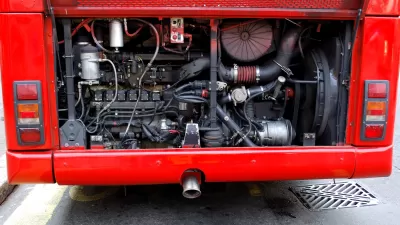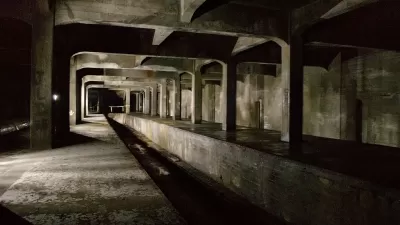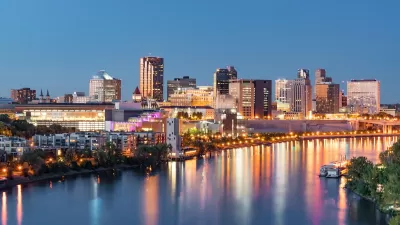Surveys indicate that women often feel exposed to threatening and unwelcome behaviour when using public transport. This report examines this problem and potential solutions from various perspectives.

Surveys indicate that women often feel exposed to physical aggression, sexual harassment or other forms of unwelcome behaviour in public transport. This is not only morally unacceptable in itself, it also causes economic and social harm, as well as reinforcing other forms of inequality. The International Transport Forum (ITF) launched a series of discussions on women in transport which provided an opportunity for all stakeholders to highlight their initiatives to enhance greater gender equality in the sector. These discussions have stimulated a number of formal and informal debates since then on a broad range of topics amongst diverse stakeholders, including transport ministers, international organisations, and ITF business and civil society partners.
To prepare the debates on women in transport at the 2018 ITF Summit on Transport Safety and Security, the ITF invited its stakeholders to discuss the importance of transport safety and security for women as transport users and employees in the sector. Their contributions, brought together here, highlight key safety and security issues, related challenges and shortcomings, and propose solutions for truly safe, secure, and ultimately inclusive and sustainable transport.
The authors mostly focus on urban areas where more women than men use public transport and they heavily depend on these systems for their mobility needs. Transport safety and security are key factors in women’s mobility habits and choices. Meanwhile, the authors’ examples show that a large majority of women worldwide feel unsafe in public transport and have been victims of some type of physical or verbal harassment and other forms of violence in public spaces. As a result, women often prefer driving when faced with a modal choice, using taxis or other forms of for-hire ride services rather than walking, cycling or using public transport.
The authors argue a fundamental cultural change is needed to design transport systems with women in mind. They call for urgent actions to make public space safe and secure, including infrastructure and operational improvements, public awareness campaigns, well-trained transport employees, and better reporting systems, combined with a zero tolerance approach to harassment. Some of these actions require time and resources to bring about change, but often relatively small improvements to the travel environment, such as better lighting, can be critical in changing the perception of safety and security.
Some authors highlight the need for better data - notably gender-differentiated data and information - to better assess the situation and develop appropriate, evidence-based responses and policies. In order to design transport systems with women in mind, the sector needs more women in transport jobs.
To increase female employment, company-based measures should be supported by broader institutional and societal efforts in order to drive the necessary cultural changes. Education and training are key in this respect, but the working conditions and environment, notably related to safety and security, are also important. Any form of discrimination, harassment or violence in the workplace must be eliminated.
Innovative technologies and new business models can also provide opportunities for improving safety and security for women in transport, both for transport users and workers. Some examples include innovative use of information and communication technologies to report cases of harassment, generate relevant data and improve access to information or services that help address safety and security challenges.
Finally, the authors argue that exchange of good practices among all stakeholders within the transport sector and with other sectors, such as energy or information and communications technologies (ICTs) is also important.
The authors point to the ITF as an institution that provides a unique platform to advance global dialogue on gender issues in transport and to facilitate sharing knowledge among policy makers.
This compendium concludes with a summary of the 2018 ITF Summit session “Safe and Secure Transport for Women”, as well as the conclusions of the Women Mobilize Women conference organised by the Deutsche Gesellschaft für Internationale Zusammenarbeit (GIZ) GmbH, which was organised as a part of the Pre-Summit’s debates. The 2018 Summit programme featured a number of other sessions and stakeholder events dedicated to women in transport. The ITF-led debate on discussions on gender and transport will continue in the lead-up to and during the 2019 ITF Summit on “Transport Connectivity for Regional Integration” to be held on 22-24 May in Leipzig.
FULL STORY: Women’s Safety and Security: A Public Transport Priority

Alabama: Trump Terminates Settlements for Black Communities Harmed By Raw Sewage
Trump deemed the landmark civil rights agreement “illegal DEI and environmental justice policy.”

Planetizen Federal Action Tracker
A weekly monitor of how Trump’s orders and actions are impacting planners and planning in America.

The 120 Year Old Tiny Home Villages That Sheltered San Francisco’s Earthquake Refugees
More than a century ago, San Francisco mobilized to house thousands of residents displaced by the 1906 earthquake. Could their strategy offer a model for the present?

BLM To Rescind Public Lands Rule
The change will downgrade conservation, once again putting federal land at risk for mining and other extractive uses.

Indy Neighborhood Group Builds Temporary Multi-Use Path
Community members, aided in part by funding from the city, repurposed a vehicle lane to create a protected bike and pedestrian path for the summer season.

Congestion Pricing Drops Holland Tunnel Delays by 65 Percent
New York City’s contentious tolling program has yielded improved traffic and roughly $100 million in revenue for the MTA.
Urban Design for Planners 1: Software Tools
This six-course series explores essential urban design concepts using open source software and equips planners with the tools they need to participate fully in the urban design process.
Planning for Universal Design
Learn the tools for implementing Universal Design in planning regulations.
Clanton & Associates, Inc.
Jessamine County Fiscal Court
Institute for Housing and Urban Development Studies (IHS)
City of Grandview
Harvard GSD Executive Education
Toledo-Lucas County Plan Commissions
Salt Lake City
NYU Wagner Graduate School of Public Service





























